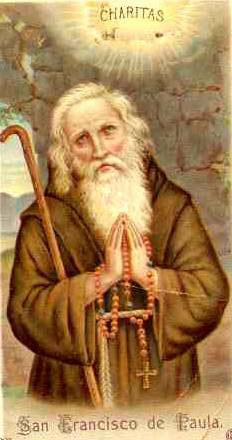We ask you, urgently: don't scroll past this
Dear readers, Catholic Online was de-platformed by Shopify for our pro-life beliefs. They shut down our Catholic Online, Catholic Online School, Prayer Candles, and Catholic Online Learning Resources essential faith tools serving over 1.4 million students and millions of families worldwide. Our founders, now in their 70's, just gave their entire life savings to protect this mission. But fewer than 2% of readers donate. If everyone gave just $5, the cost of a coffee, we could rebuild stronger and keep Catholic education free for all. Stand with us in faith. Thank you.Help Now >
Altar Lamp
FREE Catholic Classes
In the Old Testament God commanded that a lamp filled with the purest oil of olives should always burn in the Tabernacle of the Testimony without the veil ( Exodus 27:20, 21 ). The Church prescribes that at least one lamp should continually burn before the tabernacle (Rit. Rom. iv, 6), not only as an ornament of the altar, but for the purpose of worship. It is also a mark of honour. It is to remind the faithful of the presence of Christ, and is a profession of their love and affection. Mystically it signifies Christ, for by this material light He is represented who is the " true light which enlighteneth every man " ( John 1:9 ). If the resources of the church permit, it is the rule of the Caerem. Episc. (1, xii. 17) that more than one light should burn before the altar of the Blessed Sacrament, but always in uneven numbers, i.e. three, five, seven, or more. The lamp is usually suspended before the tabernacle by means of a chain or rope, and it should hang sufficiently high and removed from the altar-steps to cause no inconvenience to those who are engaged in the sanctuary. It may also be suspended from, or placed in a bracket at the side of the altar, provided always it be in front of the altar within the sanctuary proper (Cong. Sac. Rit., 2 June, I883). The altar-lamp may be made of any kind of metal, and of any shape or form. According to the opinion of reputable theologians, it would be a serious neglect, involving grave sin, to leave the altar of the Blessed Sacrament without this light for any protracted length of time, such as a day or several nights (St. Lig., VI, 248). For symbolical reasons olive oil is prescribed for the lamp burning before the altar of the Blessed Sacrament, for it is a symbol of purity, peace, and godliness. Since pure olive oil, without any admixture, causes some inconvenience in the average American climate, oil containing between 60 and 65 per cent of pure olive oil is supposed to be legitimate material. Where olive oil cannot be had, it is allowed, at the discretion of the ordinary, to use other, and as far as possible vegetable, oils (Cong. Sac. Rit., 9 July, 1864). In case of necessity, that is, in very poor churches, or where it is practically impossible to procure olive or vegetable oils, the ordinary, according to the general opinion of theologians, would be justified to authorize the use of petroleum. We are of the opinion, however, that there are but few parishes that can claim this exemption on the plea of poverty. Gas (Ephem. Lit., IX, 176, 1895) and electric lights (Cong. Sac. Rit., 4 June, 1895) are not allowed in its stead. The Caerem. Episc. (ibid.) would have three lights burn continually before the high altar, and one light before the other altars, at least during Mass and Vespers. Before the Blessed Sacrament, wherever kept, a lamp should be constantly burning. Our bishops have the power of granting permission to a priest, under certain circumstances, to keep the Blessed Sacrament in his house. In such cases, by virtue of Faculty, n. 24, Form. I, the priest may keep it without a light, if otherwise it would be exposed to the danger of irreverence or sacrilege. For the same reason we believe It may be kept also in the church without a light during the night.
Join the Movement
When you sign up below, you don't just join an email list - you're joining an entire movement for Free world class Catholic education.

-

- Stations of the Cross
- Easter / Lent
- 5 Lenten Prayers
- Ash Wednesday
- Living Lent
- 7 Morning Prayers
- Mysteries of the Rosary
- Litany of the Bl. Virgin Mary
- Popular Saints
- Popular Prayers
- Female Saints
- Saint Feast Days by Month
- Pray the Rosary
Pope Francis’ April Prayer Intention: Using Technology to Strengthen Human Connections
Finding Peace Through Prayer in a World of Worry
Trump Administration Withholds Federal Grants from Planned Parenthood Over DEI and Civil Rights Concerns
Daily Catholic
 Daily Readings for Wednesday, April 02, 2025
Daily Readings for Wednesday, April 02, 2025 St. Francis of Paola: Saint of the Day for Wednesday, April 02, 2025
St. Francis of Paola: Saint of the Day for Wednesday, April 02, 2025 Prayer for God's Help in Daily Actions: Prayer of the Day for Friday, March 14, 2025
Prayer for God's Help in Daily Actions: Prayer of the Day for Friday, March 14, 2025 Daily Readings for Tuesday, April 01, 2025
Daily Readings for Tuesday, April 01, 2025 St. Hugh of Grenoble: Saint of the Day for Tuesday, April 01, 2025
St. Hugh of Grenoble: Saint of the Day for Tuesday, April 01, 2025- To Perceive Animals as God's Gifts: Prayer of the Day for Thursday, March 13, 2025
![]()
Copyright 2025 Catholic Online. All materials contained on this site, whether written, audible or visual are the exclusive property of Catholic Online and are protected under U.S. and International copyright laws, © Copyright 2025 Catholic Online. Any unauthorized use, without prior written consent of Catholic Online is strictly forbidden and prohibited.
Catholic Online is a Project of Your Catholic Voice Foundation, a Not-for-Profit Corporation. Your Catholic Voice Foundation has been granted a recognition of tax exemption under Section 501(c)(3) of the Internal Revenue Code. Federal Tax Identification Number: 81-0596847. Your gift is tax-deductible as allowed by law.


 Daily Readings for Wednesday, April 02, 2025
Daily Readings for Wednesday, April 02, 2025 St. Francis of Paola: Saint of the Day for Wednesday, April 02, 2025
St. Francis of Paola: Saint of the Day for Wednesday, April 02, 2025 Prayer for God's Help in Daily Actions: Prayer of the Day for Friday, March 14, 2025
Prayer for God's Help in Daily Actions: Prayer of the Day for Friday, March 14, 2025 St. Hugh of Grenoble: Saint of the Day for Tuesday, April 01, 2025
St. Hugh of Grenoble: Saint of the Day for Tuesday, April 01, 2025

